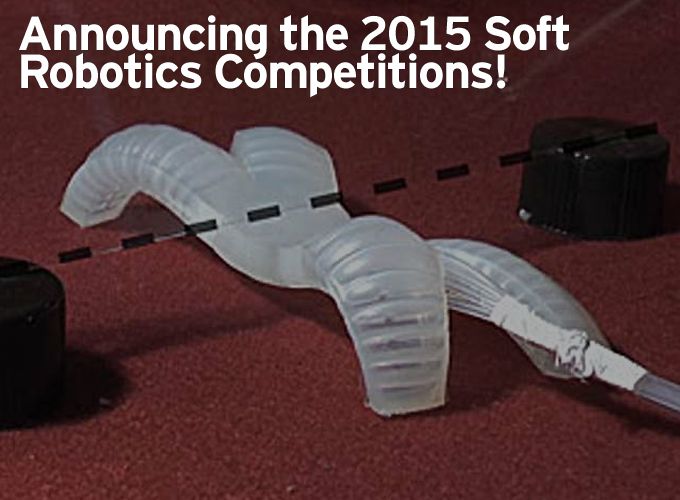The 2015 Prize for Contributions in Soft Robotics rewards academic researchers for sharing their work and advancing the field. The competitions include $10,000 in prizes!
RoboticsTomorrow | Information from Soft Robotics Toolkit
The Soft Robotics Toolkit team is happy to announce two competitions intended to reward students, researchers, makers, and designers of all levels for their contributions to the field of soft robotics. Since launching the site in September 2014, we've been overwhelmed with the positive response from the community. We want to recognize those who make soft robotics such an exciting area, so we are launching the following competitions. The Soft Robotics Design Competition 2015 rewards individuals and teams that create new and interesting projects using material they can find on the toolkit website. The 2015 Prize for Contributions in Soft Robotics rewards academic researchers for sharing their work and advancing the field. The competitions include $10,000 in prizes! Registration is still open so go to the competition pages for more details on how to participate.
March 25th update: The competitions have received significant interest from students, researchers, and makers; We are excited to say that 55 teams from 19 countries have registered to participate in the two competitions! These include teams from 31 different universities across the world as well 15 teams of motivated hobbyists and high school students. We are very much looking forward to the results of these team's hard work over the coming months. Also, as a reminder: we are still accepting entrants, so if you are interested in taking part please register or get in touch!
What is the soft robotics toolkit?
The Soft Robotics Toolkit is a collection of shared resources to support the design, fabrication, modeling, characterization, and control of soft robotic devices. The toolkit was developed as part of educational research being undertaken in the Harvard Biodesign Lab. The ultimate aim of the toolkit is to advance the field of soft robotics by allowing designers and researchers to build upon each other’s work. The toolkit includes an open source fluidic control board, detailed design documentation describing a wide range of soft robotic components (including actuators and sensors), and related files that can be downloaded and used in the design, manufacture, and operation of soft robots. In combination with low material costs and increasingly accessible rapid prototyping technologies such as 3D printers, laser cutters, and CNC mills, the toolkit enables soft robotic components to be produced easily and affordably.
Each section of the site focuses on a soft robotic device or component, and includes the following sections:
- Design: A description of the device and how it works, with related design files that can be downloaded and guidelines on potential modifications you could make to the design.
- Fabrication: A bill of materials listing all of the parts, materials, and equipment you will need to build your own device, plus a detailed set of instructions for you to follow.
- Modeling: A discussion of modeling and analysis approaches you can use to predict and understand the behavior of the device and optimize your design.
- Testing: In order to validate your models and better understand your device, you will need to carry out empirical tests. This section describes the tests that other designers and researchers have carried out and that may provide inspiration for the design of your own experiments.
- Case Studies: Examples of how others have used the device or component for real-world applications.
- Downloads: All of the files related to the design, fabrication, modeling, testing, and control of the device.
The content on this site is drawn from projects carried out in a number of research labs. Our aim is to improve and expand the toolkit by welcoming feedback and contributions from the soft robotics community. If you have an interest in advancing the field and engaging with this community, please get in touch!
The content & opinions in this article are the author’s and do not necessarily represent the views of RoboticsTomorrow
Comments (0)
This post does not have any comments. Be the first to leave a comment below.
Featured Product


